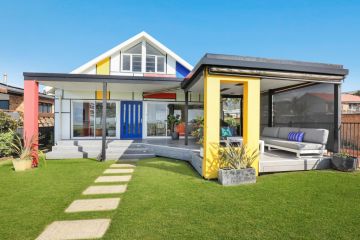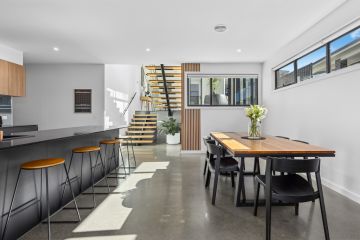DIY renovation project management

Jumping into a DIY home renovation is exciting and rewarding. It is all about making your home more attractive, functional, valuable and enjoyable.
Once you have established the scope of your renovation and set a budget, it is time to look at the nuts and bolts of your remodelling work.
Warn the neighbours
Depending on the type of renovations you are tackling and the impact on surrounding properties – for example, fumes, dust, noise or traffic disruption – it is a smart move to warn your neighbours. Each state and territory outlines specific residential noise and other building restrictions stemming from the Environmental Protection Act. Victoria’s Environmental Protection Authority provides helpful advice on negotiating with neighbours regarding your construction schedule and the legislated noise restrictions. It is a good idea to check with your local environmental protection agency or authority for advice on waste (including asbestos) and noise management.
Energy efficiency
There are regulations regarding energy that you must adhere to when building or upgrading a home. You can find these on the Australian Building Codes Board (ABCB) website. The purpose of these regulations is to reduce greenhouse gases and help us all to use energy more efficiently – which is important for the environment and also your back pocket!
The regulations include minimum energy ratings for heating and cooling (note that there are concessions for those in more extreme climate zones), building materials, insulation, glazing, sealing buildings and lighting.
Along with glazing and installing insulation, going solar can dramatically reduce your energy bills and is wonderful for the environment. For further green building advice visit the Australian Government’s Your Home website. You may also be eligible for energy-saving rebates offered by state and territory governments across Australia.
Water saving
Renovating offers the perfect opportunity to update or replace fixtures in your home to become more water-efficient and reduce your utility bills. This may include taps over basins, showerheads, lavatory flushing systems and appliances such as washing machines and dishwashers.
Minimum water efficiency standards for rental properties are set out in the Residential Tenancies Act 2010. For example, showerheads and all internal cold or single mixer taps (except those over a bath) must have a maximum flow of 9 litres per minute, and no leaks of course!
Waste management
The benefits of reducing, reusing and recycling building materials are self-evident. According to the Australian Government’s Your Energy Savings website, building waste contributes up to 40 per cent of Australia’s landfill, so minimising what you send to the garbage tip is important and can save serious money along the way.
Whether planning a DIY project or working with a builder, use recycled or energy-efficient materials where you can and make a thorough waste plan from the outset. And remember, the more accurate you are in your hands-on measurements and supply estimates, the less likely you are to make wasteful mistakes.
You must be extremely careful when it comes to hazardous waste. Lead-based paint and asbestos are common problems for renovators. If your home was built prior to 1990, asbestos could be present, and if it was built prior to 1970 lead-based paint is likely to have been used. These materials are safe if left intact, but when disturbed they can be extremely toxic. Check with your local council or environmental protection authority for advice on how to manage these materials and resulting waste.
When to call the trade professionals
Okay DIY aficionados, you may be uncannily handy with the tools and have a knack for pulling things apart and putting them back together again in working order, but there will be times you need to call a professional.
Overestimating your abilities can lead to costly or even serious mishaps, and work that needs to be certified by a qualified and insured professional cannot fall into the DIY category.
Qualified trades you may require when project managing a home renovation include:
- a registered architect or draftsperson who is covered by professional indemnity insurance to draw up plans for your renovation
- a registered and insured building surveyor who can determine if your renovation or extension requires a building permit and assess construction work for building regulation compliance
- a registered and insured structural engineer who can advise on the building’s strength calculations and supervise the building plans
- a registered and insured builder. All builders must have professional indemnity insurance and, depending on the scope of the job, domestic building insurance and public indemnity insurance may also be required
- a licensed electrician, plumber, gasfitter or drainer who can provide certified services.
Home renovations can try the patience of a saint so make sure you find a trade professional you feel comfortable working with. Get recommendations from friends and family, check out the tradies’ previous work and obtain three quotes. Review the quotes with a fine-tooth comb and ask questions about finishes and the ins and outs of the services outlined, this way you can pick up on hidden costs. Always check their accreditation and insurance, and get everything in writing!
Continue reading the DIY Home Renovation Guide with: Hands-on home renovation tips.
We recommend
States
Capital Cities
Capital Cities - Rentals
Popular Areas
Allhomes
More







